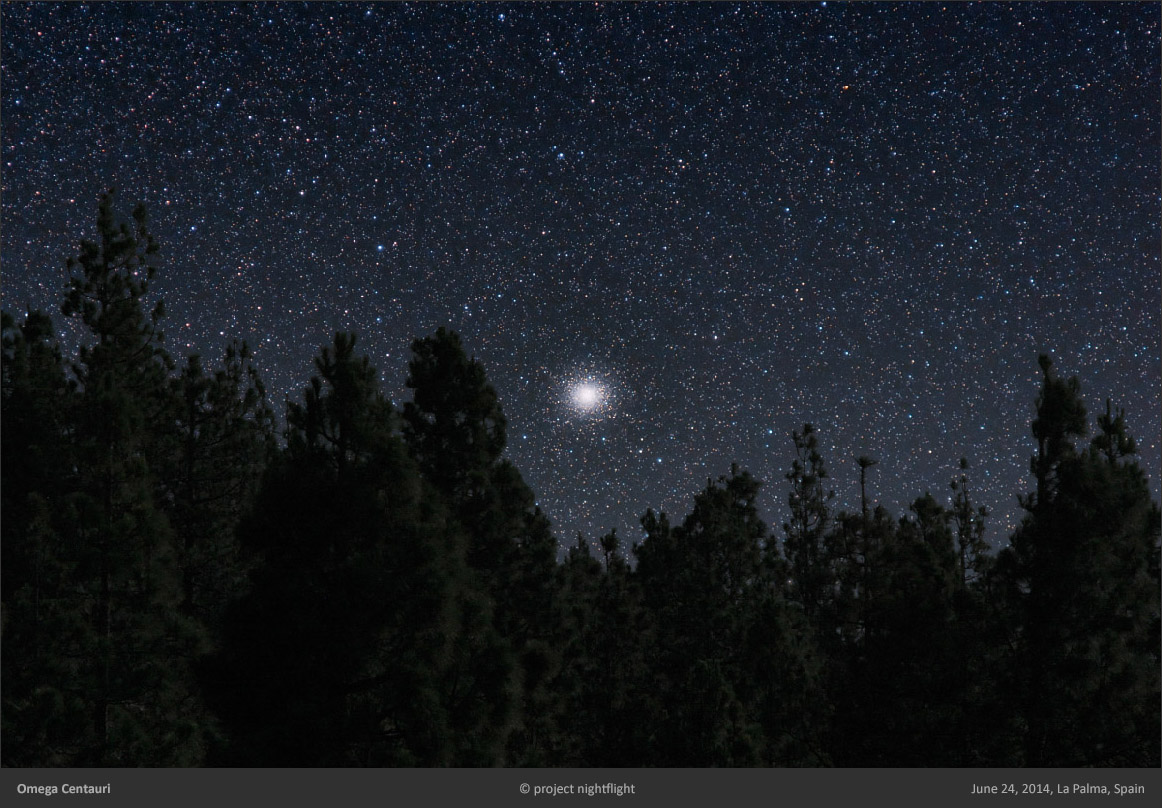
Omega Centauri is one of the most spectacular deep-sky objects visible to the naked eye and widely known, even among non-stargazers. But very few people have
actually seen it with their own eyes, mostly because of its southern declination of -48 degrees. To catch a good glimpse, it needs to rise at least five degrees above
the horizon. On the northern hemisphere, this is true for locations at a latitude of 37 degrees or less, e.g. the Southern Mediterranean or the southern half of the
United States.
Typically, stargazers on the northern hemisphere will see Omega Centauri just barely skimming the horizon. The project nightflight image gives an authentic
impression of what binocular observers can expect. It was shot on the Spanish island La Palma, from a latitude of 28 degrees north. The famous cluster spans a
half degree across, which is the same size as the full moon. Even small binoculars, from 8x30, show the brightest individual stars of the cluster. In larger binoculars
or in telescopes, the cluster explodes with stars.
Omega Centauri is a remarkable globular cluster in every respect. Among the globulars, it is the brightest of all in our sky (3.7 mag), the one with the largest
apparent size, and its origins are highly unusual. It is believed that Omega Centauri is what's left of a dwarf galaxy that was consumed by the Milky Way. Several
findings support this assumption, e.g. its stellar population untypical of a globular and the 40,000 solar mass black hole researchers discovered inside in 2008.
[Released October 4, 2014]
This project nightflight image was sponsored by








